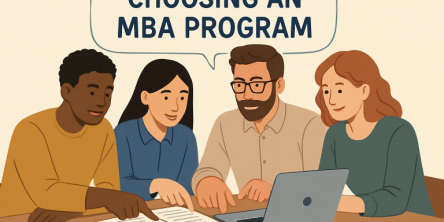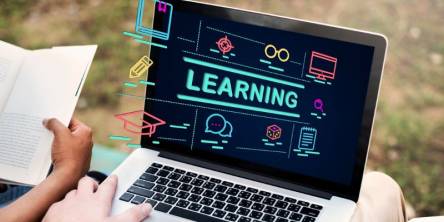Distraction-Free Learning: The Perks of Offline Video Lessons

The way we learn today has transformed dramatically. With digital classrooms, mobile devices, and streaming platforms offering educational content around the clock, knowledge has never been more accessible. Yet despite this digital abundance, one challenge remains constant: distractions. Notifications, autoplay suggestions, messages, emails, and even just the temptation of an open browser tab can turn a simple study session into a fragmented experience. That’s why more learners are turning to offline video lessons as a way to take back their focus and learn on their own terms.
Offline learning might sound like a throwback in a world that celebrates real-time everything. But for many students, professionals, and lifelong learners, disconnecting is the very thing that makes learning feel intentional again. With offline video lessons, there's no algorithm deciding what you should watch next. There's no surprise banner trying to sell you something. It’s just you, the content, and the space to concentrate fully.
This simplicity isn’t a limitation—it’s a strength. In a time where attention is currency, offline learning offers the quiet room your brain needs to go deep.
The Attention Economy and the Cost of Distractions
If you've ever tried to watch an educational video on a public platform, you've likely seen what happens. A few minutes into the video, your phone buzzes. Then you get a recommendation to watch something completely unrelated. Before you know it, you've gone from a science tutorial to a comedy clip, and the original lesson has been forgotten. It’s not a matter of discipline—it’s the way online platforms are designed.
These distractions don’t just pull your eyes away from the screen; they fracture your ability to absorb, retain, and apply new information. For learners who need to focus for exams, build technical skills, or explore complex ideas, this kind of digital noise becomes a serious barrier.
Offline video lessons remove that friction entirely. They exist outside the attention economy. You download them once, and from that point forward, you’re in control. No buffering. No pop-ups. No new notifications. Just steady, immersive learning.
Read more: Studying Smarter, Not Harder: Top Online Resources for Every Learning Style
The Power of Setting Your Own Pace
Another benefit of offline video lessons is the ability to control the pace of learning without the pressure of connectivity. Online lessons can sometimes feel rushed, especially when they're part of a stream or timed access system. In contrast, downloaded lessons let learners hit pause and come back later, rewind as many times as needed, or even watch on repeat without racking up data usage.
This self-paced environment makes a huge difference for people with different learning styles. Visual learners can pause and sketch notes. Auditory learners can replay a section multiple times. Learners with focus challenges or neurodiverse needs can space out sessions in ways that match their energy levels and attention span.
The convenience of offline lessons doesn’t just help with retention—it gives learners permission to stay curious. Instead of rushing through material to beat a data cap or Wi-Fi cutoff, they can sit with the content and let the ideas land.
Making Learning More Mobile and Flexible
Offline learning also opens up new possibilities for where and when people learn. With a downloaded library of lessons, you’re no longer tied to a desk or an internet connection. You can study during a commute, review materials while traveling, or take a break in nature while still having access to meaningful education. This kind of flexibility empowers people who may not have constant access to Wi-Fi or stable data plans but still want to invest in their growth.
Students in rural areas, for example, often rely on offline materials because bandwidth is limited. The same goes for professionals who work in remote or field environments. Having high-quality video lessons stored locally means education travels with you, adapting to your lifestyle instead of the other way around.
Of course, accessing that content in the first place is key. That’s why many learners use a Chrome Extension to download video lessons from platforms like YouTube. Instead of relying on temporary workarounds or third-party downloads with questionable quality, a reliable browser extension allows users to save their educational content quickly and securely. With just a few clicks, that knowledge becomes portable, playable, and permanent—no Wi-Fi required.
Once the content is saved, learners are free to engage without worrying about load times, streaming glitches, or disappearing links. It’s a small shift that leads to a much more stable learning experience.
Supporting Focus and Mental Well-Being
The benefits of offline learning aren’t just technical—they’re psychological. Constant online connectivity often leads to cognitive fatigue. Even when we’re not actively switching tabs or checking messages, our brains are processing a barrage of visual and auditory cues. Over time, this divided attention takes a toll on how we feel, how we think, and how well we can engage with new material.
Offline video lessons support mental clarity. Without the pressure to respond, multitask, or keep up with real-time feeds, learners can relax into the material. It feels more like reading a book than browsing a timeline—quiet, immersive, and calm. This creates a space not just for memorization, but for deeper comprehension and reflection.
For learners who struggle with anxiety, burnout, or digital fatigue, this calmer learning space can be transformative. It shifts education from something stressful and chaotic to something restorative and empowering.
Long-Term Retention and Reusability
One of the often-overlooked benefits of offline video lessons is their lasting value. Once downloaded, these lessons become part of a personal knowledge archive. They can be revisited as needed—before a big presentation, when teaching someone else, or simply as a refresher when memory fades. This permanence gives learners a sense of ownership over their growth.
In educational institutions or training environments, offline lessons also make it easier to standardize materials across multiple learners or teams. Everyone gets the same information, in the same format, at the same time—regardless of internet access or location. That consistency helps ensure quality learning, especially in settings where reliable connectivity isn’t guaranteed.
By creating and sharing video lessons in offline formats, educators and content creators are also contributing to educational equity. They're helping close the digital divide—not with more bandwidth, but with smarter, more accessible design.
Final Thoughts: Learning That Works on Your Terms
As education continues to evolve in the digital era, the tools we use must align with how we actually live and learn. Offline video lessons represent a quiet revolution in learning—not because they’re flashy or trendy, but because they respect the learner’s time, space, and focus.
In a noisy world, sometimes the best learning happens in silence. No pings. No distractions. Just you, your curiosity, and the freedom to explore ideas at your own pace.
By combining modern technology with timeless principles of deep focus and autonomy, offline video learning bridges the gap between convenience and concentration. It gives learners the structure they need, the freedom they crave, and the confidence to grow—on their own terms.
Similar Articles
Choosing the right HR MBA program can shape your career success. Learn how to evaluate accreditation, curriculum, faculty, flexibility, cost, and ROI to find a program that fits your goals and enhances your leadership in human resources.
Educational demands are changing rapidly, requiring school leaders to develop adaptable skill sets that address both present and future needs.
When you walk into a well-designed building, everything feels organized. The floors are clean, the space is open, and nothing looks out of place.
How overseas education consultants adapt and thrive in a fast-changing global education landscape, guiding students to success abroad.
Classrooms across Australia are rapidly evolving to meet the learning needs of the next generation. Among the most impactful changes is the strategic use of visual learning tools. In 2025, the humble whiteboard is no longer just a writing surface – it’s a dynamic centrepiece of collaboration, creativity, and communication in education.
Learn how an online MBA in finance boosts career prospects, salary potential, and work-life balance—without putting your job or lifestyle on hold.
Educational institutions are more than just classrooms—they’re dynamic environments filled with constant activity, high foot traffic, and evolving health and safety needs
Climbing the career ladder today means constantly upgrading your skills, but putting your job on hold to go back to school isn't an option for most professionals.
A safe learning environment is essential for students to thrive academically, emotionally, and socially. When children feel secure and comfortable in their surroundings, they are more likely to engage in learning, express themselves confidently, and build positive relationships with their peers and teachers









